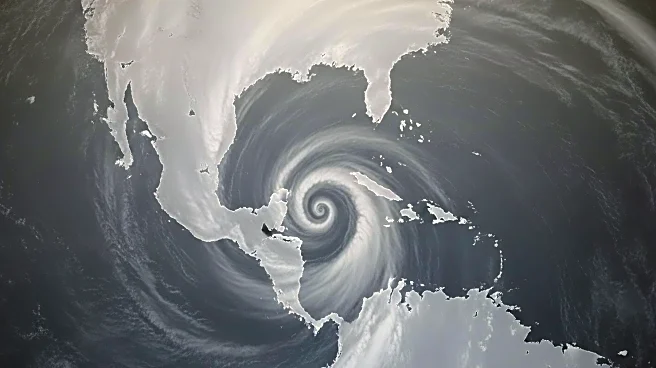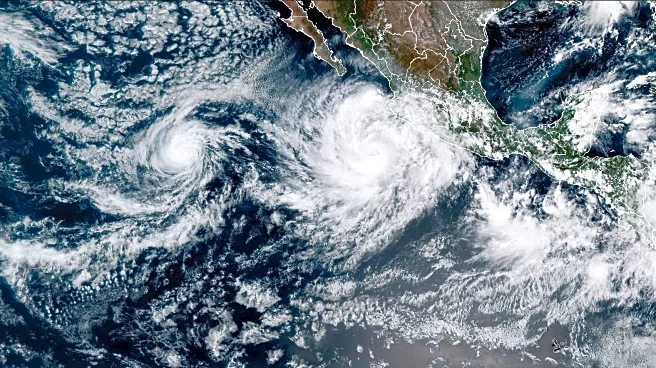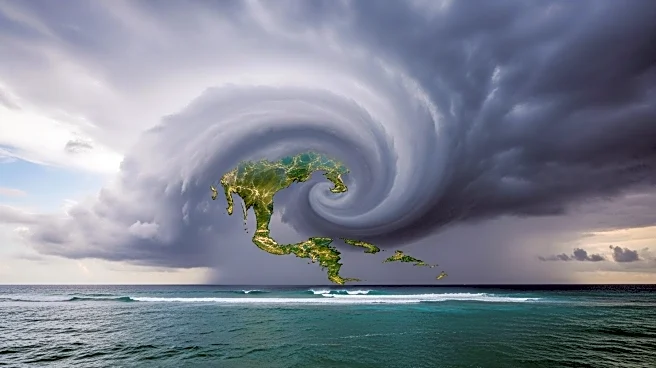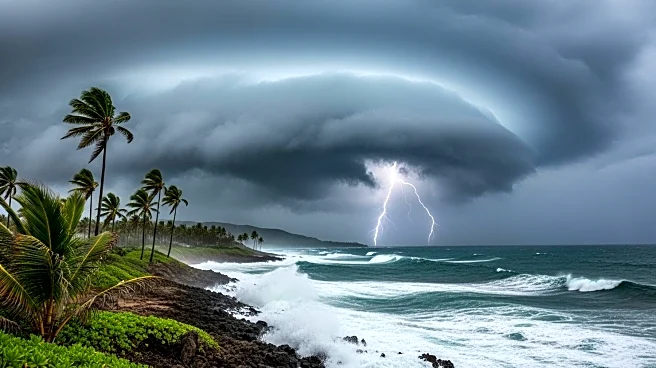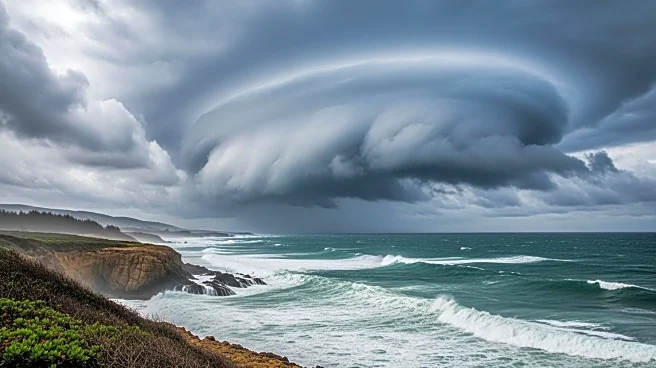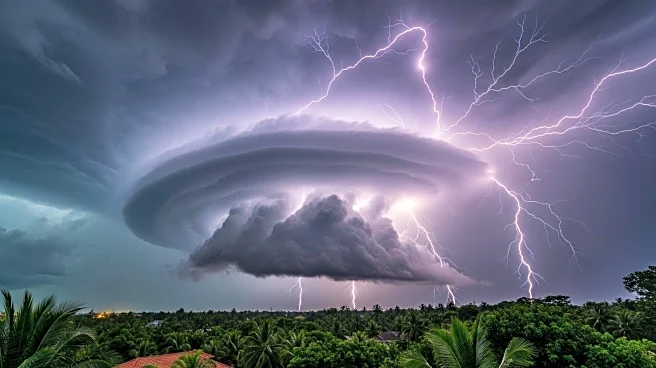What's Happening?
Tropical Storm Jerry has formed over the central Atlantic Ocean, marking the 10th named storm of the 2025 hurricane season. The National Hurricane Center reported that Jerry is currently located over 1,300 miles east-southeast of the northern Leeward Islands, with maximum sustained winds of 45 mph. The storm is moving westward at 24 mph, and while no coastal watches or warnings are currently in effect, tropical storm watches may be issued for the northern Leeward Islands by Tuesday night.
Why It's Important?
The emergence of Tropical Storm Jerry signifies continued activity in the Atlantic hurricane season, which has seen a notable increase in storm formations. While Jerry is not expected to pose a threat to the mainland United States, its potential impact on the northern Leeward Islands highlights the need for vigilance and preparedness in regions susceptible to tropical storms. The development of Jerry also underscores the importance of tracking storm paths and understanding atmospheric conditions that influence their trajectories.
What's Next?
Meteorologists will closely monitor Jerry's progression and potential strengthening into a hurricane. The National Hurricane Center will issue updates on the storm's path and any changes in its intensity, ensuring that affected areas can take appropriate measures. The possibility of tropical storm watches for the northern Leeward Islands indicates the need for readiness in case of adverse weather conditions.
Beyond the Headlines
The late-season activity in the Atlantic raises considerations about the impact of climate change on hurricane patterns and the importance of adaptive strategies for communities in storm-prone areas. Understanding these dynamics is crucial for future preparedness and mitigation efforts.


